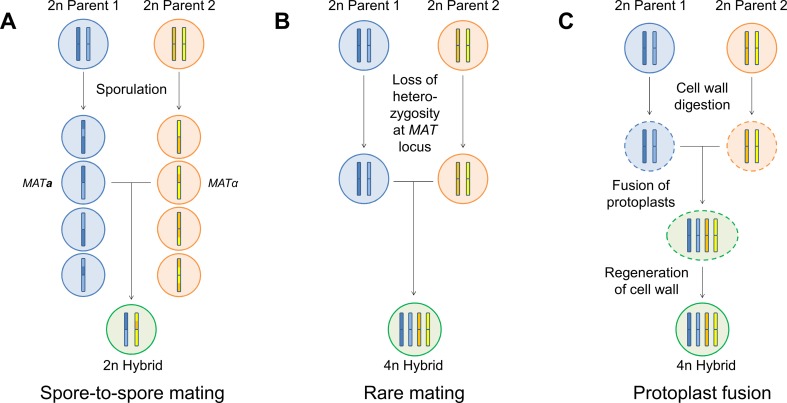Fig. 2.
An overview of different hybridization methods. During a spore-to-spore mating, the diploid (2n) parent strains are first sporulated, after which haploid spores of opposite mating type derived from the two parent strains are brought together and allowed to mate. A diploid (2n) hybrid is formed. During b rare mating, the diploid (2n) parent strains are brought together without any prior sporulation. The cells are not able to directly mate, but rare spontaneous loss of heterozygosity at the mating-type locus can occur in a fraction of the population. As a result, diploid cells with a single mating type, which are able to mate, are formed. A tetraploid (4n) hybrid is formed. During c protoplast fusion, the cell walls of the diploid (2n) parent strains are first digested, after which the protoplasts are brought together and undergo fusion, followed by the regeneration of the cell wall. A tetraploid (4n) hybrid is formed

